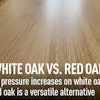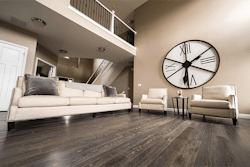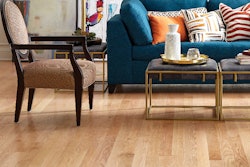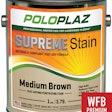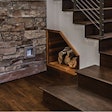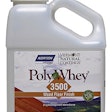Scott Leavengood of Oregon State University has more numbers for us this week on wood hardness. (Click here to see last week's post on the incredible variation in Janka hardness he found in just one board.)
Scott, you did some more testing for us?
Yes, we did some other species that we had around the office. For ponderosa pine, the average hardness on the tangential face was 490 lbs. and 504 lbs. for the radial face of the same piece (the published value is 460 lbs.). Red alder showed more of a difference-but again, in the opposite direction than I expected-the average hardness on the radial face was 563 lbs., and it was 828 lbs. on the tangential face (the published value is 590 lbs.).
The table below shows the other species and results. As you can see, for the species we tested, only ponderosa pine had an average anywhere close to published values. All the others were much harder than what is published.
So what's going on here? Clearly the least we can say that wood is variable-highly variable! But do you have any explanations? Or advice on how to use this?
I can't explain it all, unfortunately. On the black oak flooring, we saw a range in Janka hardness of nearly 1,000 lbs. in tests conducted about 2 inches apart on the same piece!
We do need to keep in mind that the published values for these species are for tests conducted on wood at 12% moisture content (we tested the samples at about 6% moisture content-and the strength properties increase as the moisture content decreases, i.e., wood is stronger when it's drier). Further, the published values are for hundreds of test specimens. We only looked at 3-10 tests per sample here. It could well be if we tested a few hundred more boards, we'd come up with more similar values.
Wrapping things up here, what do these values really mean?
Again, they are a good measure of one critical property of flooring: resistance to indentation. But given the variability, how reliable are they? All wood is variable, so really the best we can do is specify an average, but maybe listing an average with a range and sample size wouldn't hurt!
Is there some other property we could measure that would tell us something similar about resistance to denting in flooring?
The Janka and Brinell tests (I'll look at Brinell later, OK?) both involve a relatively slow, steady pressure to examine resistance to indentation. However, many times we are also worried about dents that occur from dropped objects for example, that is, from an impact vs. slow steady pressure. Well, there are test methods for impact as well (such as ASTM D7136), and we do these sorts of tests on wood plastic composites and other materials at OWIC. However I've never heard of any such tests being applied to solid wood flooring. It certainly could be an interesting way to evaluate different materials as well as the effect of different types of finishes, for example a hard, brittle finish vs. a more pliable finish.
Can you do some more tests for us in another blog post? I'm curious about engineered wood flooring in particular.
Absolutely!
My thanks to Scott (and Trina) for their help on this. Scott has promised to do more testing on floors, so we'll return to this topic later this year.













